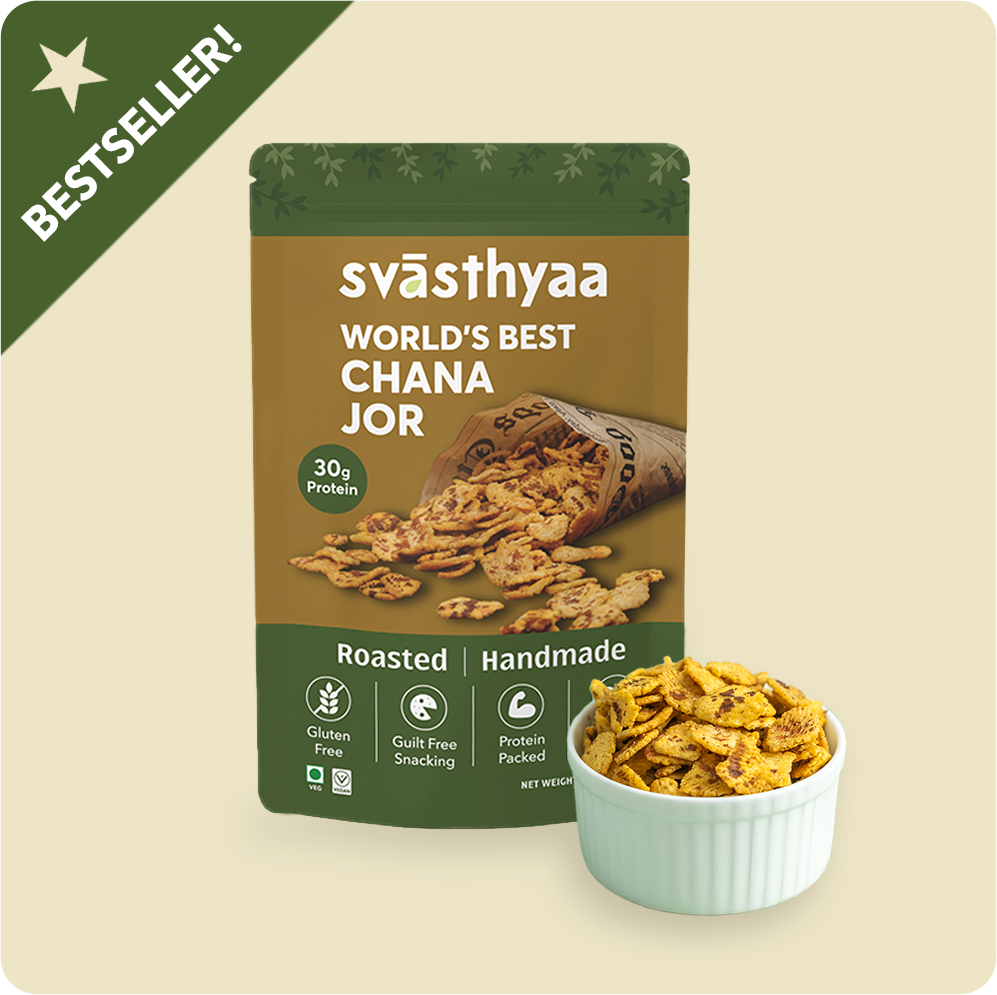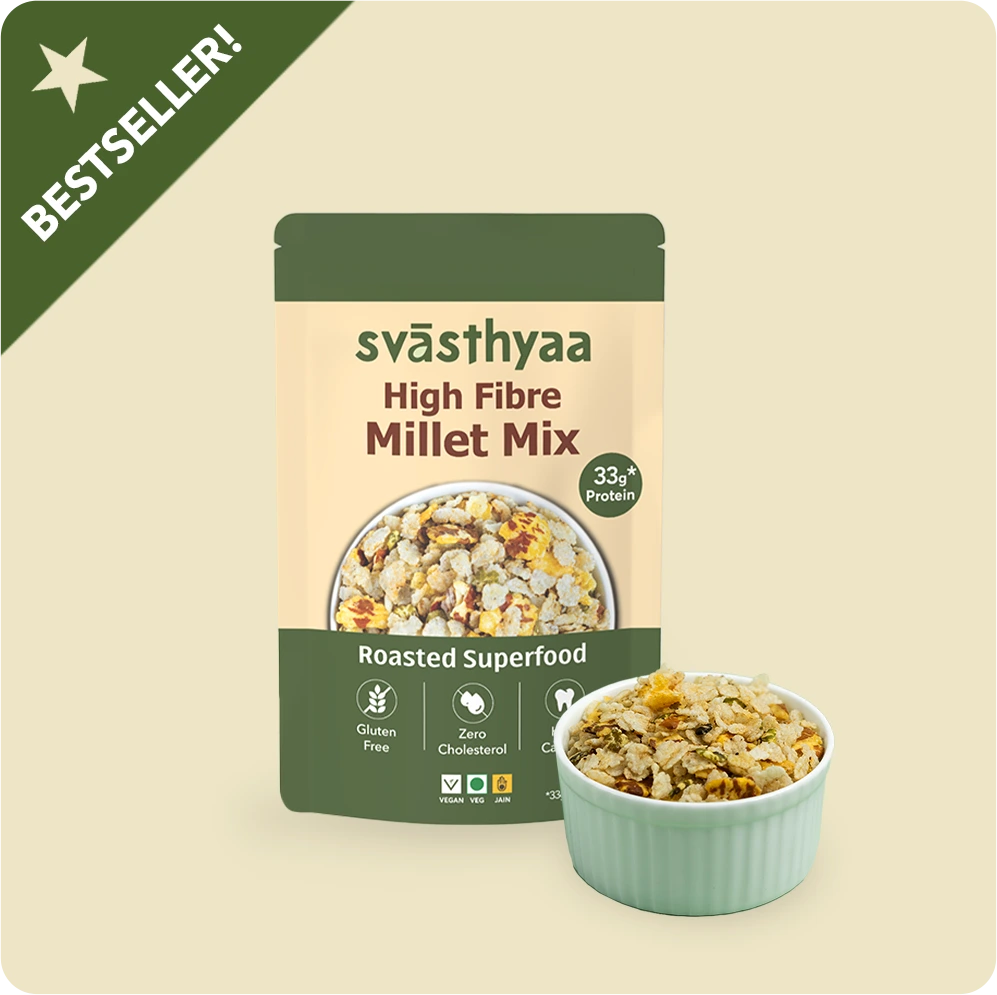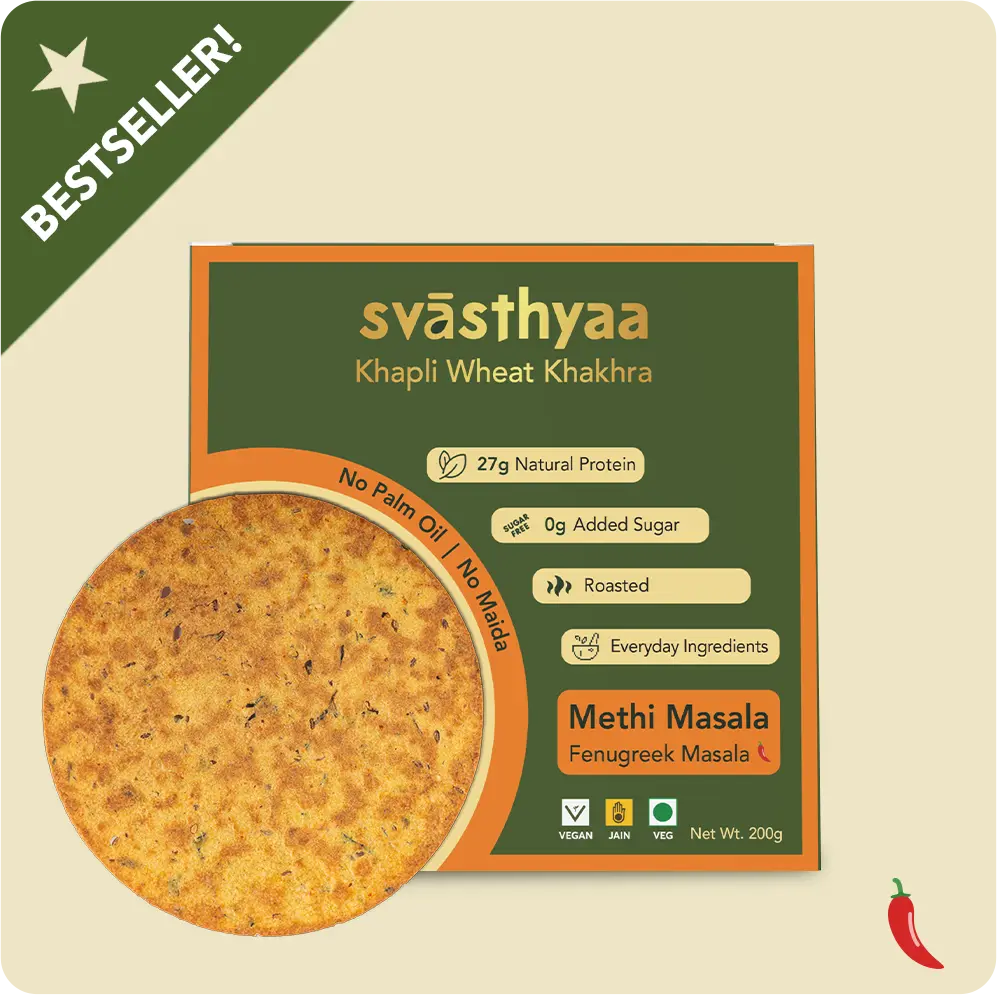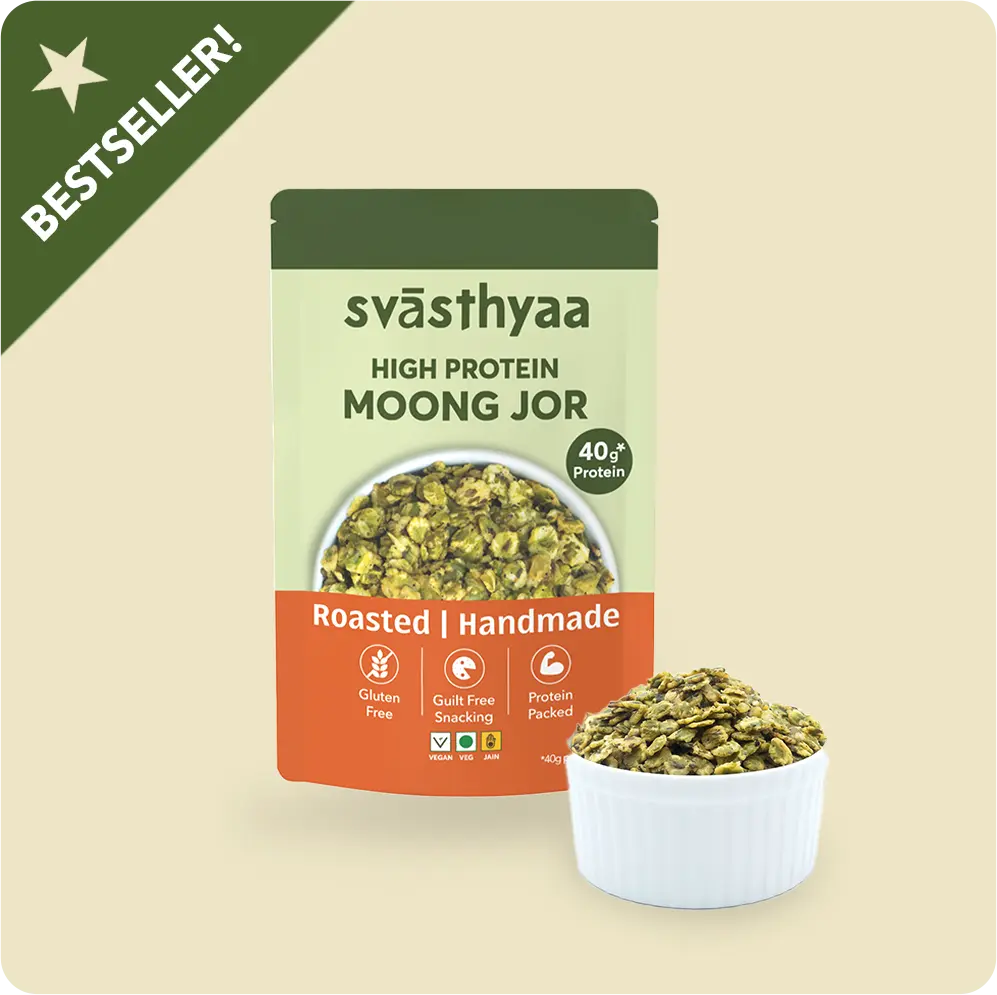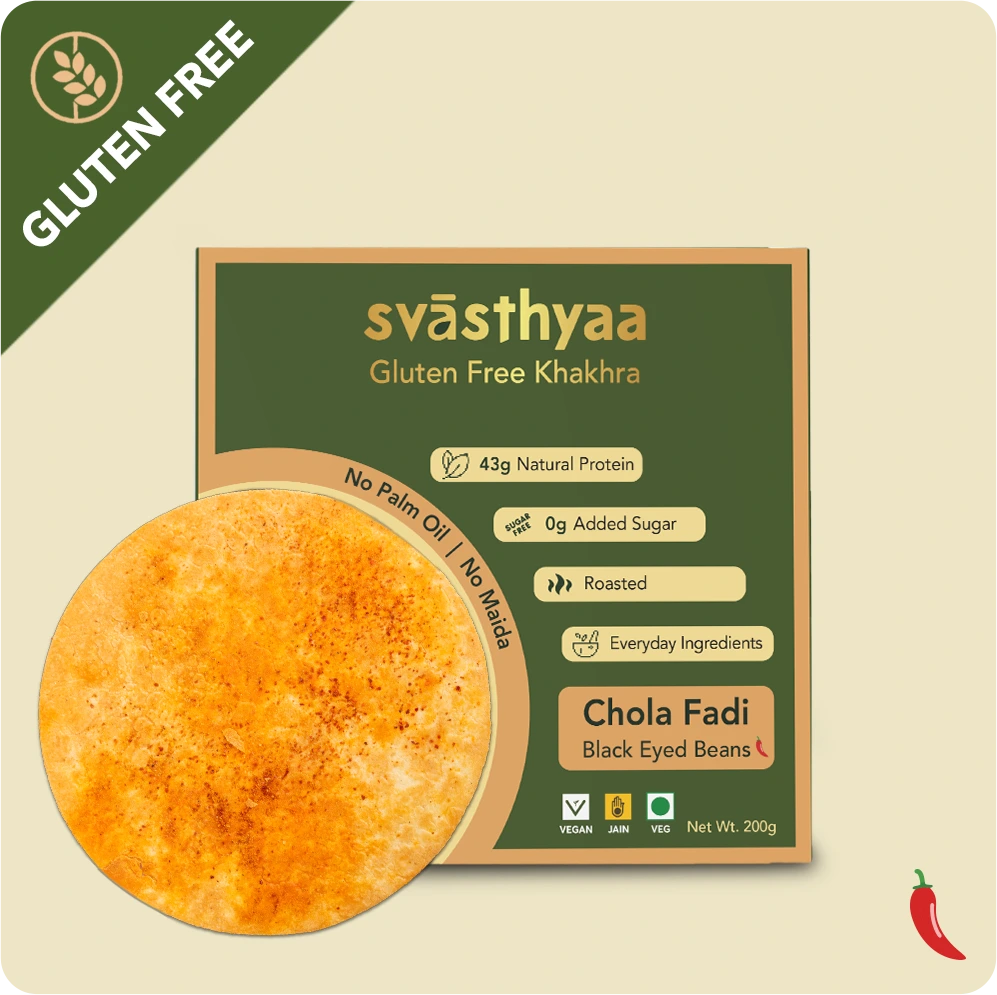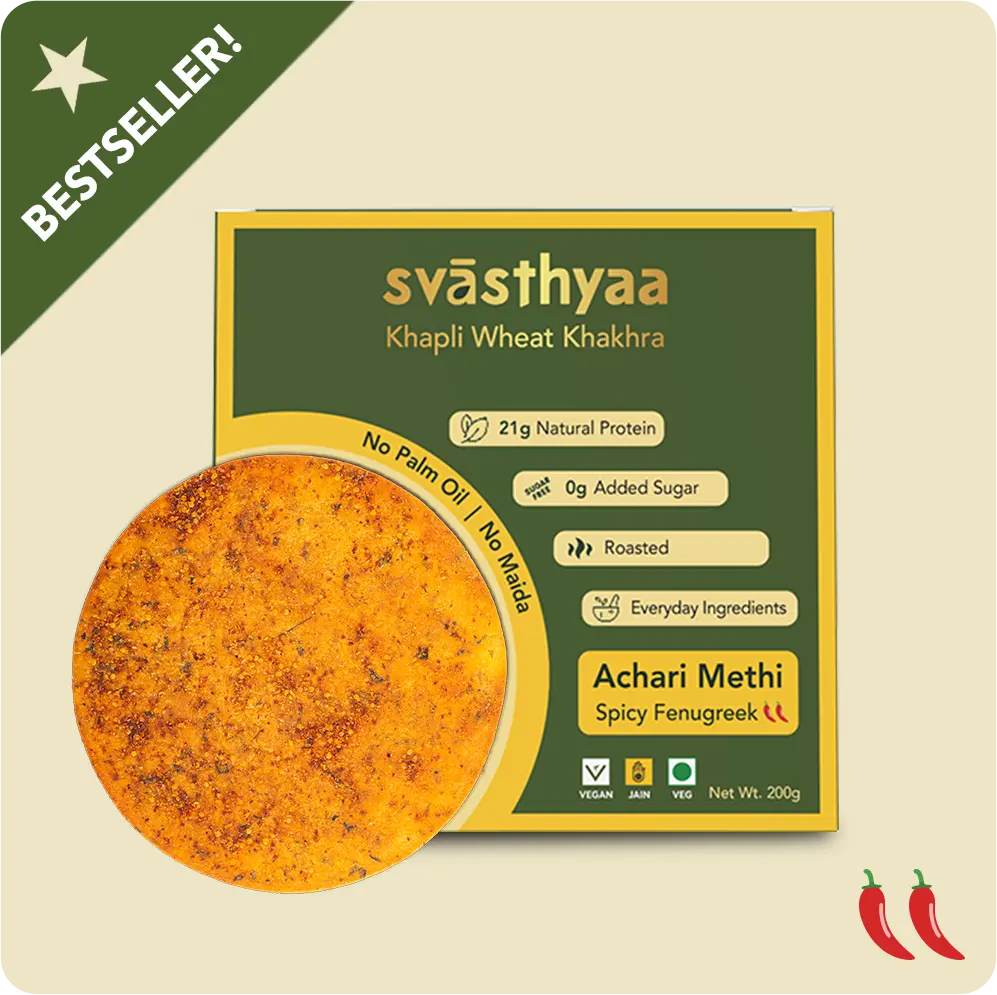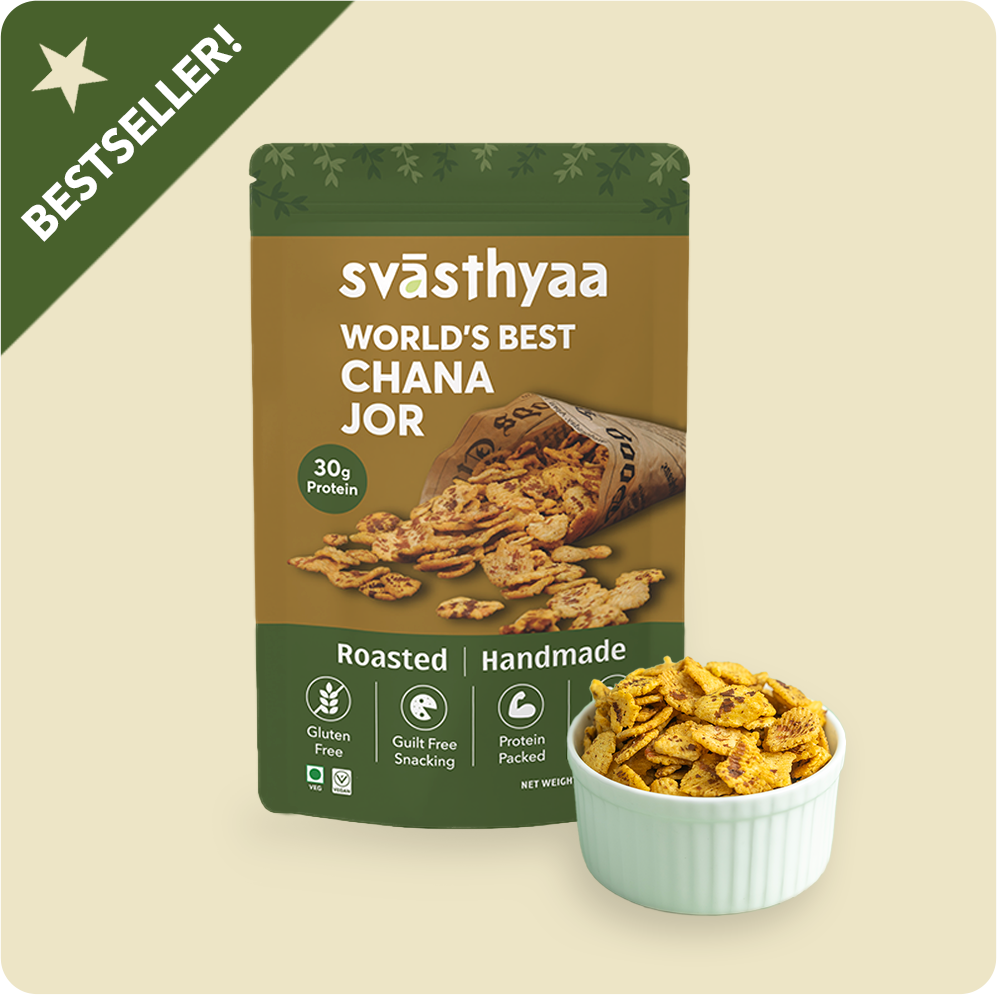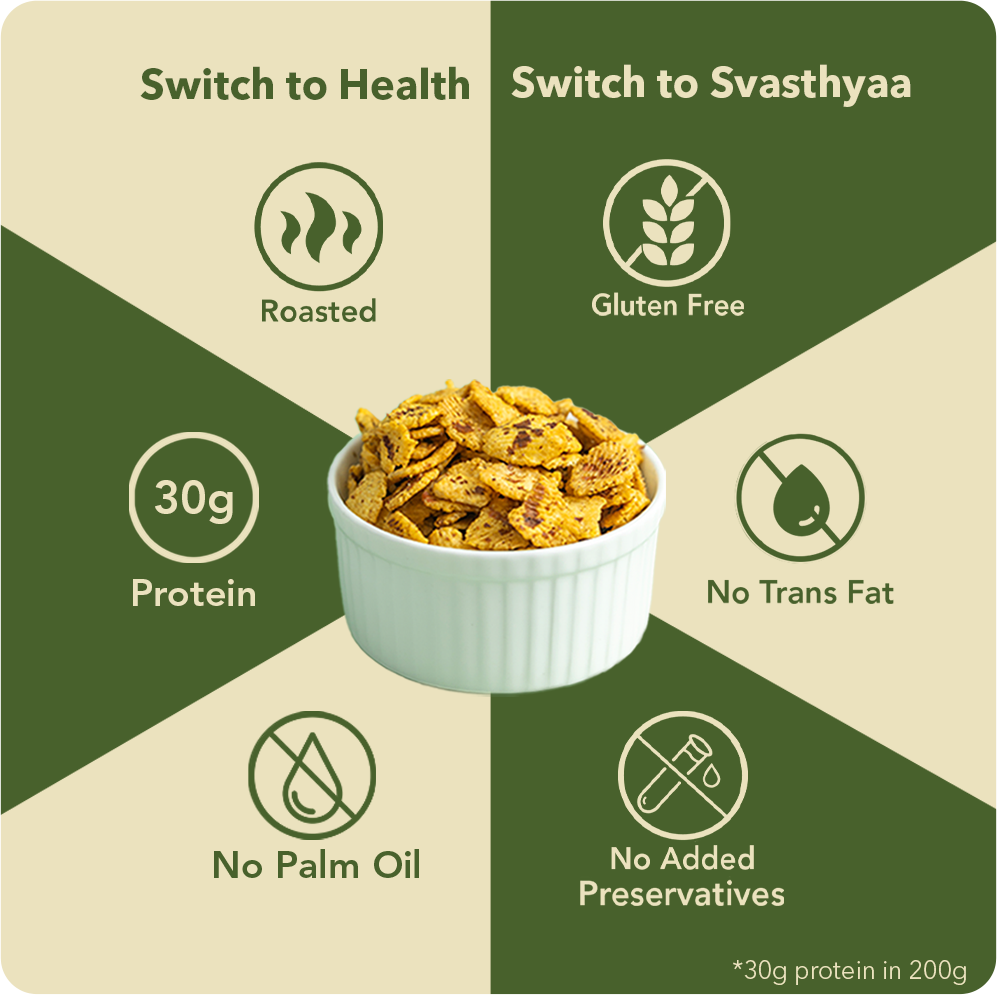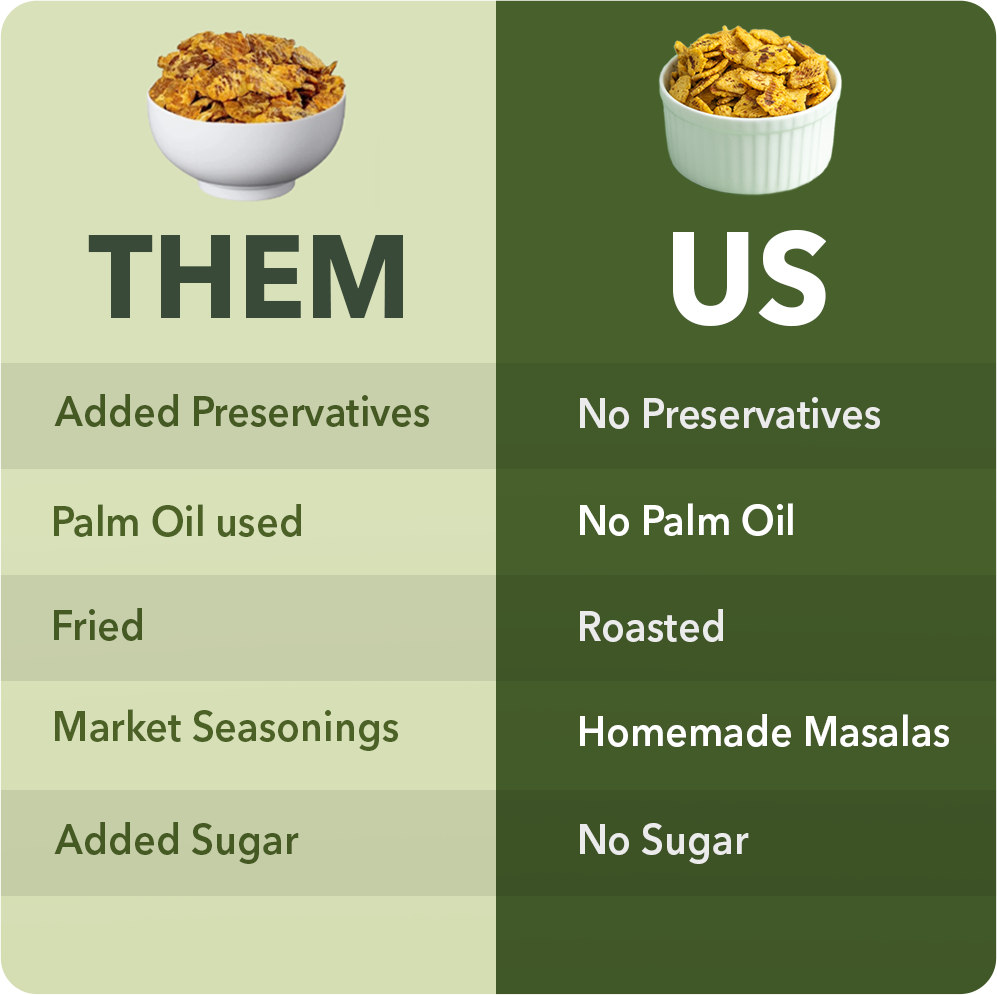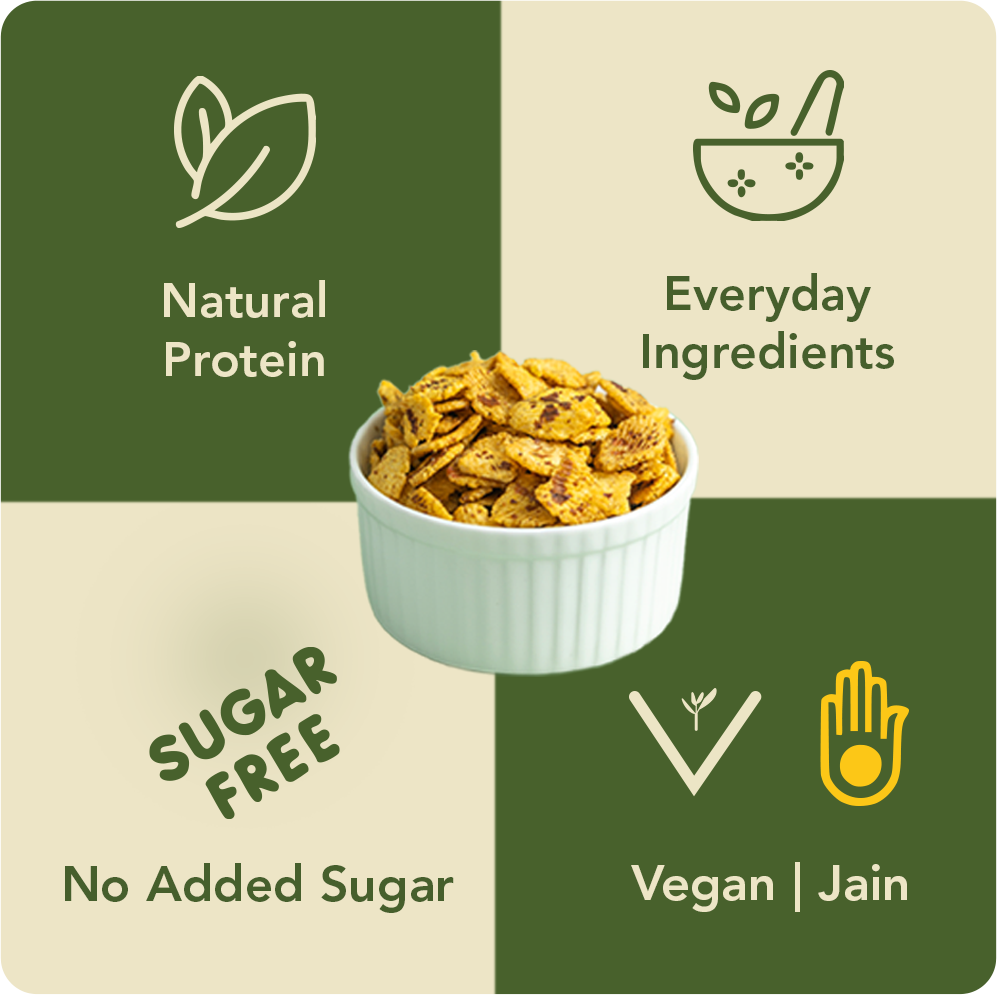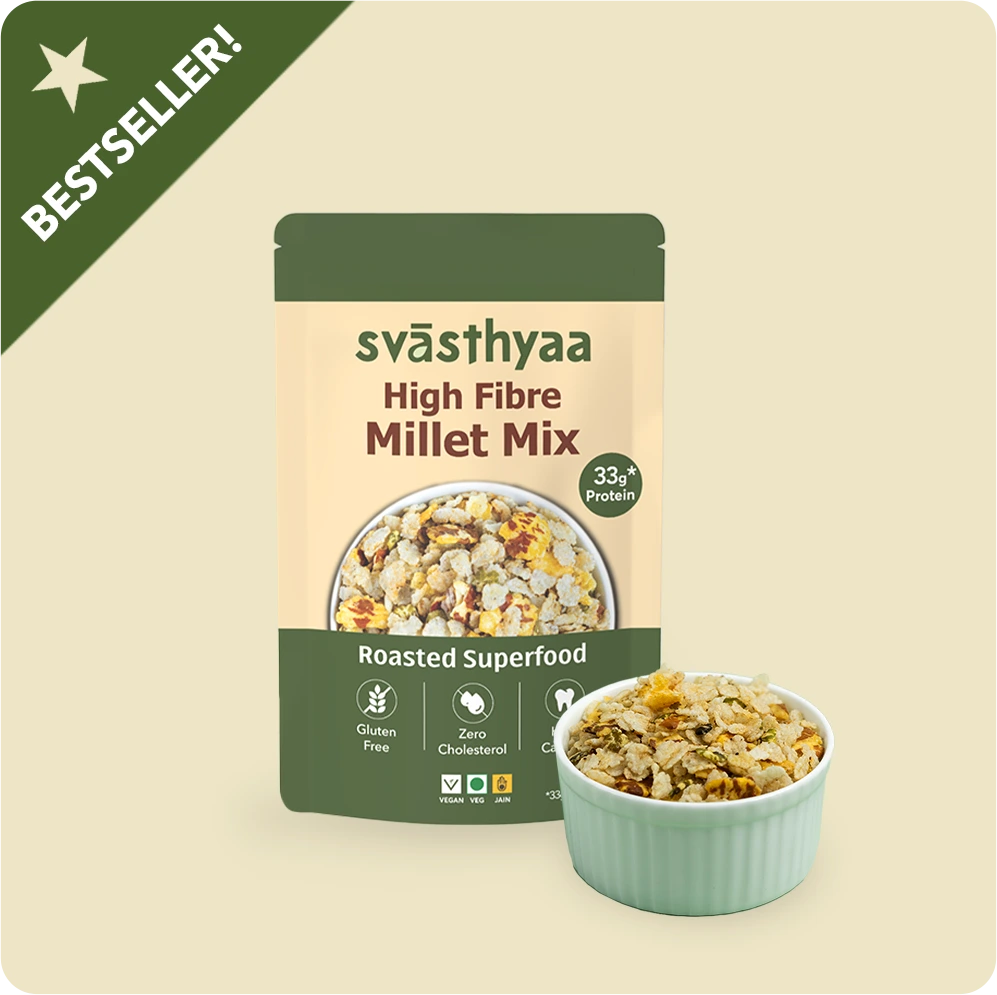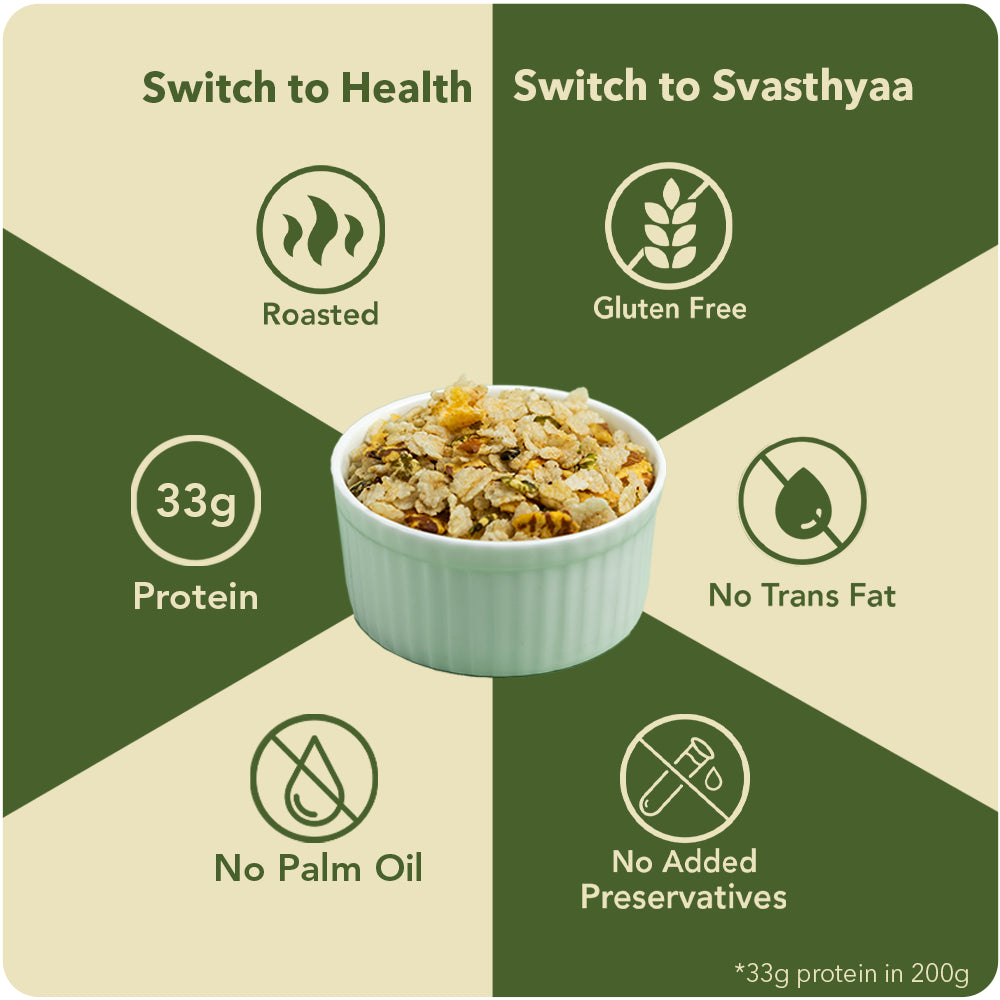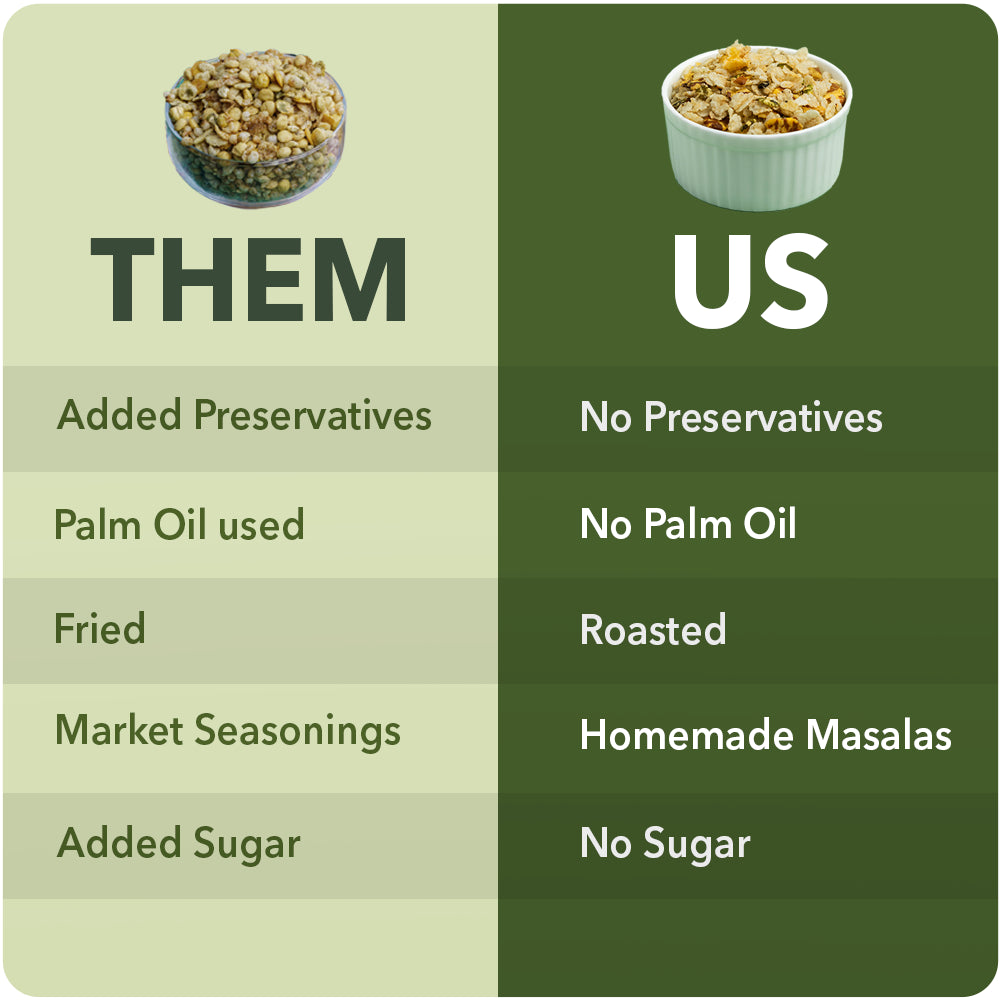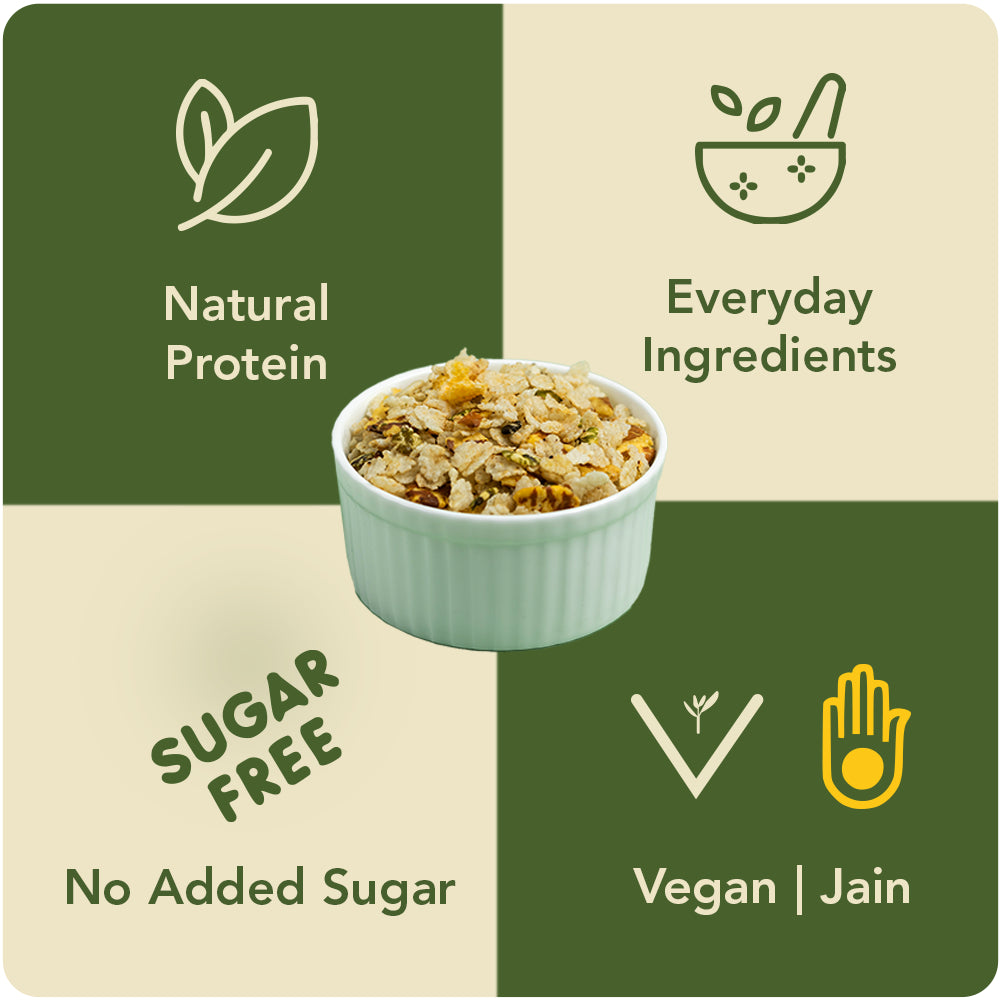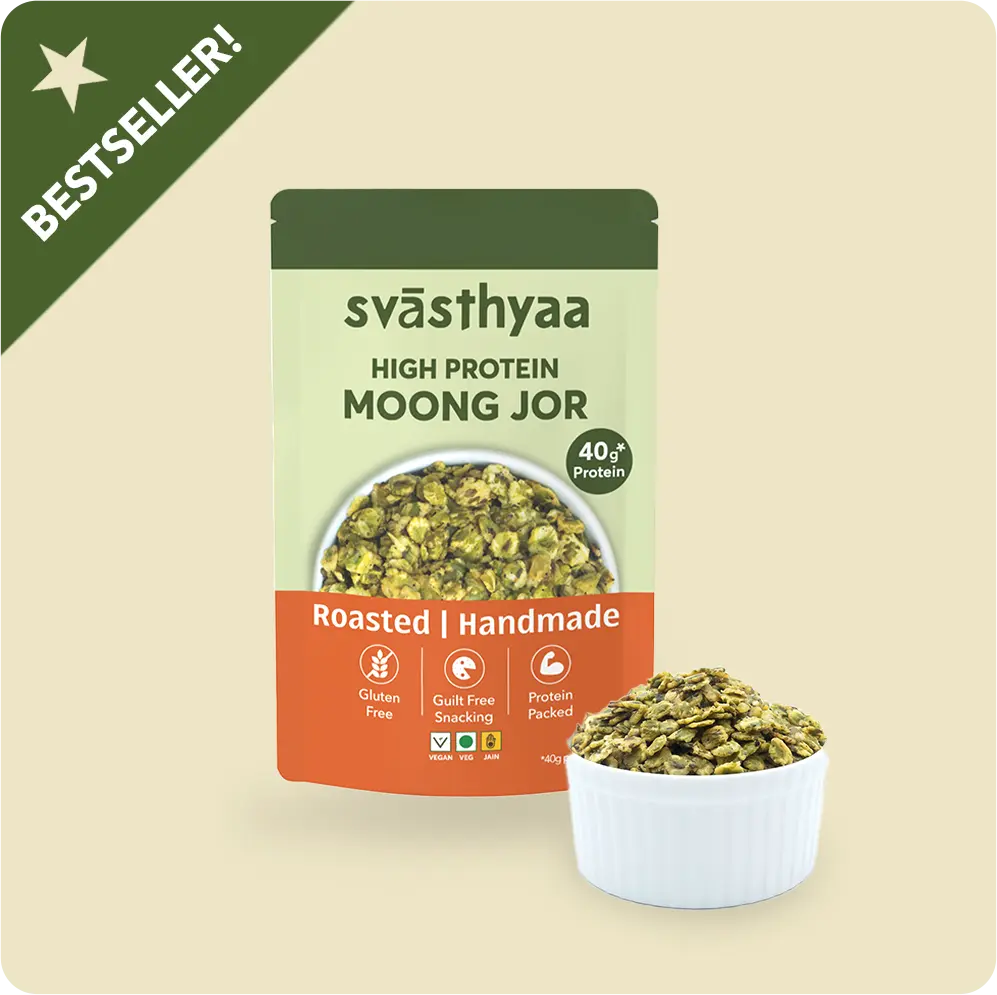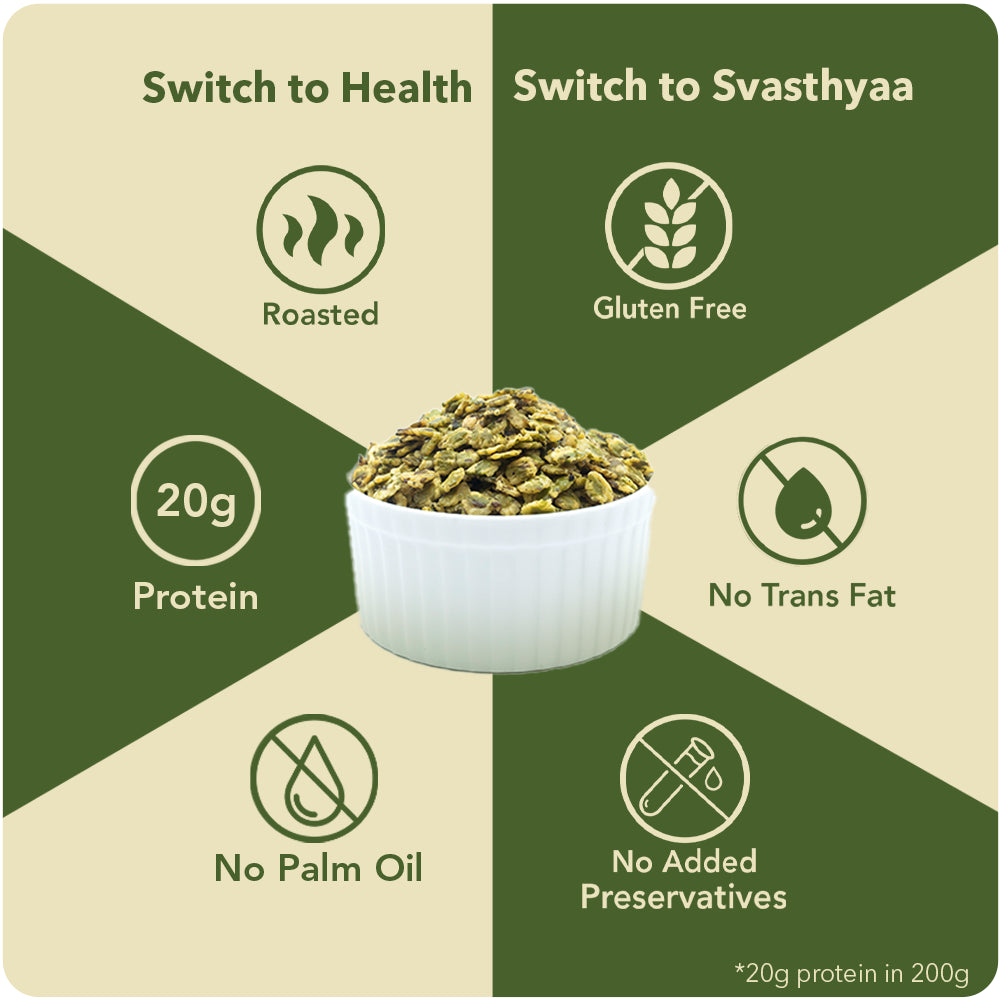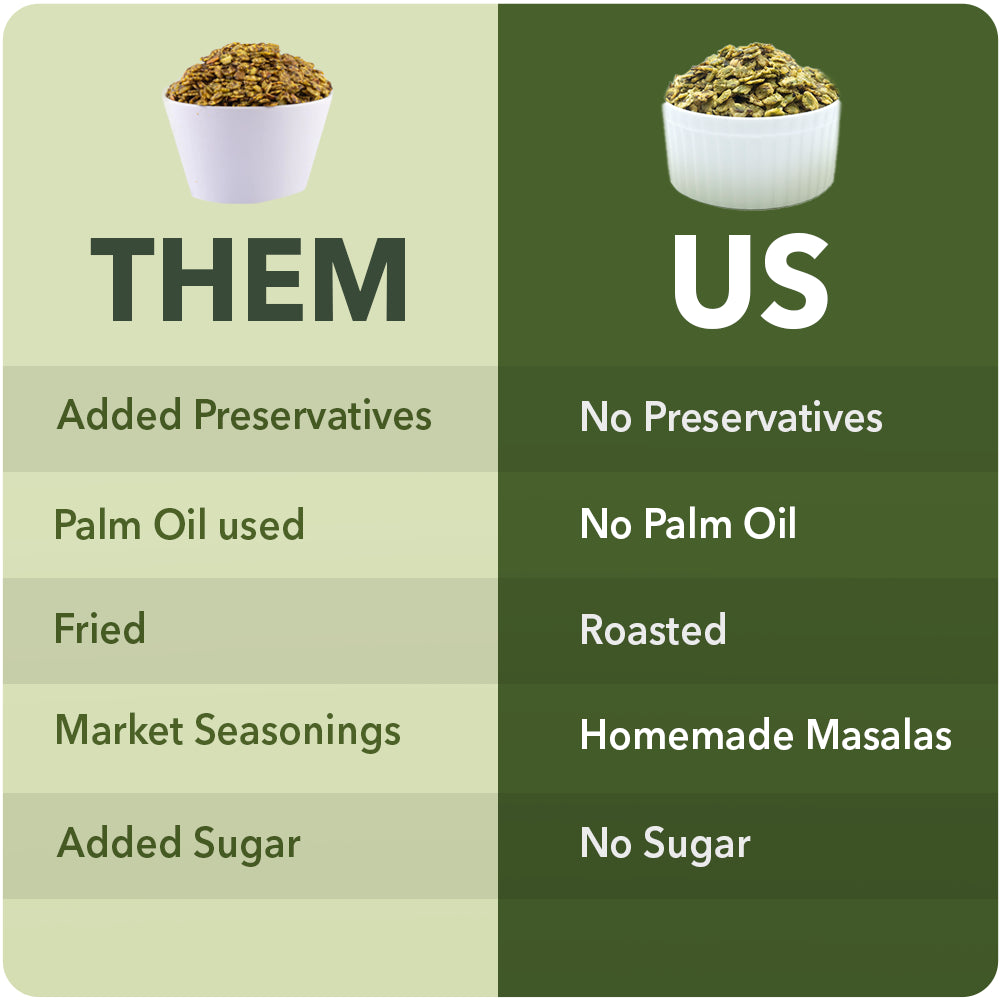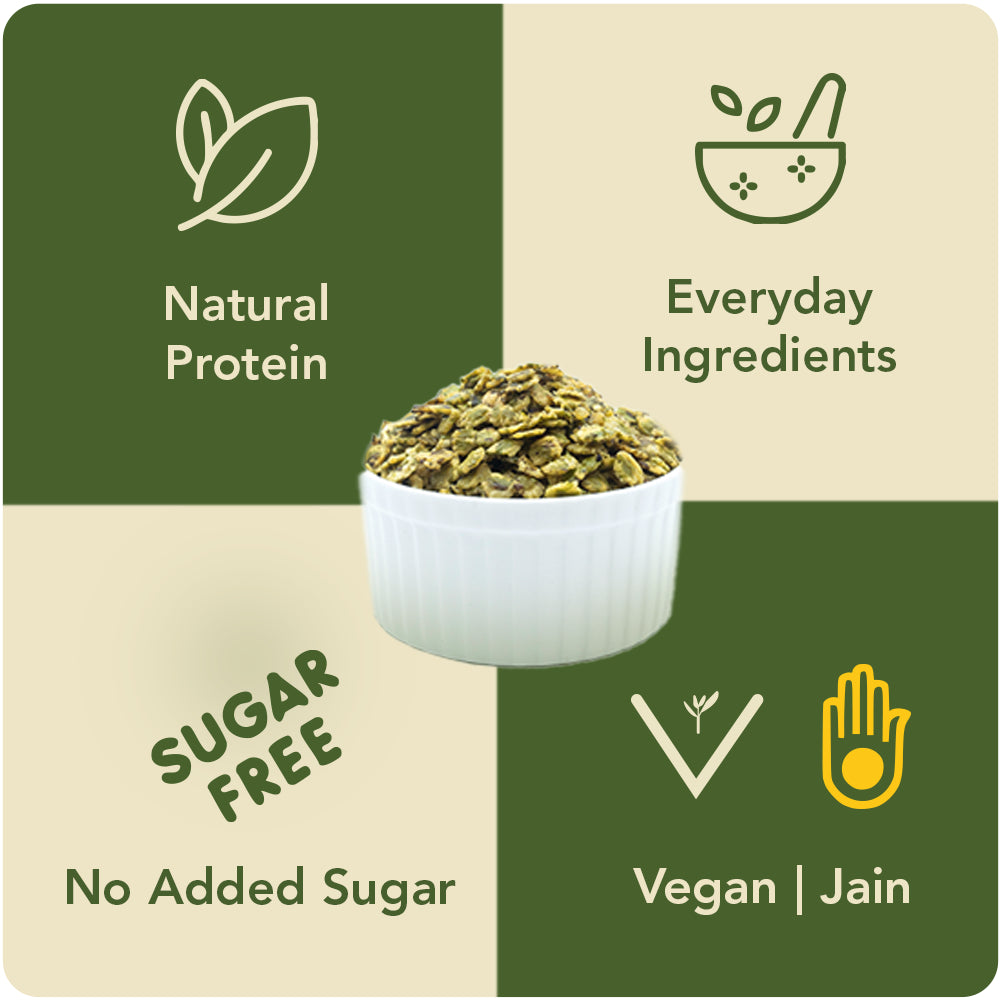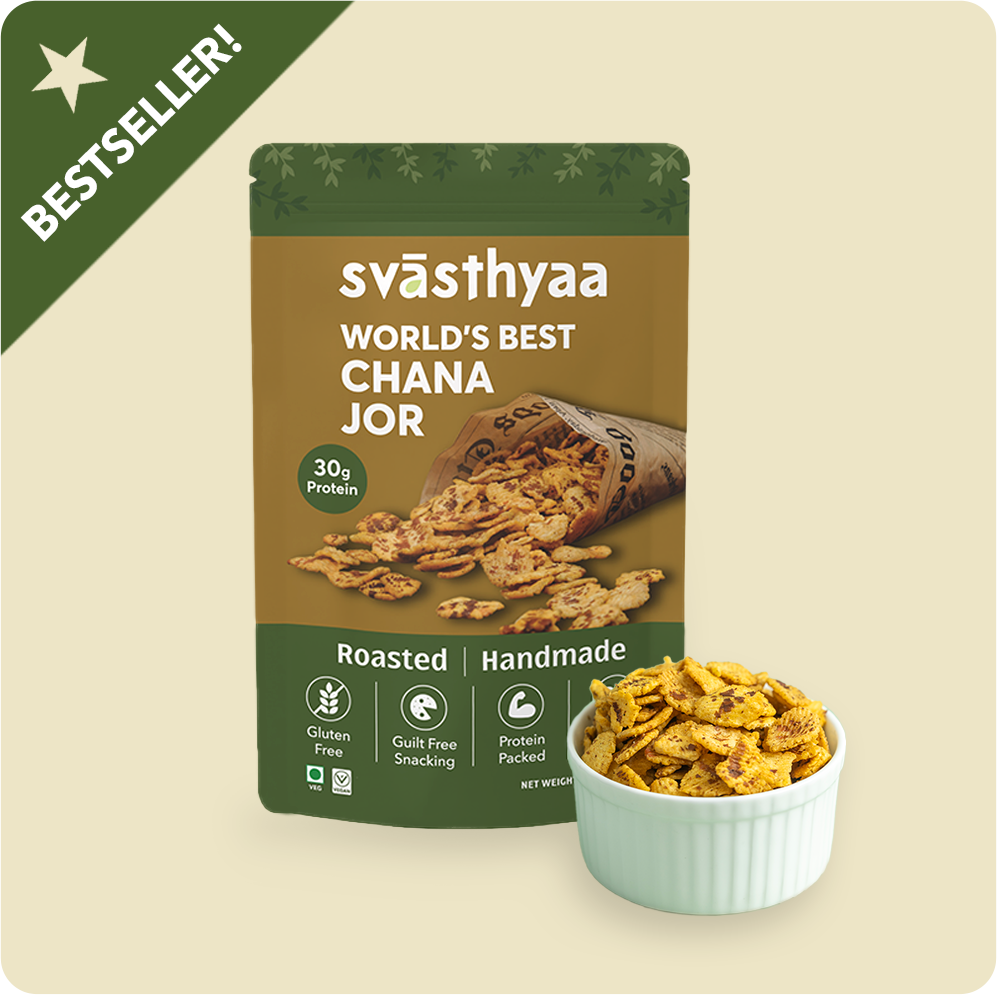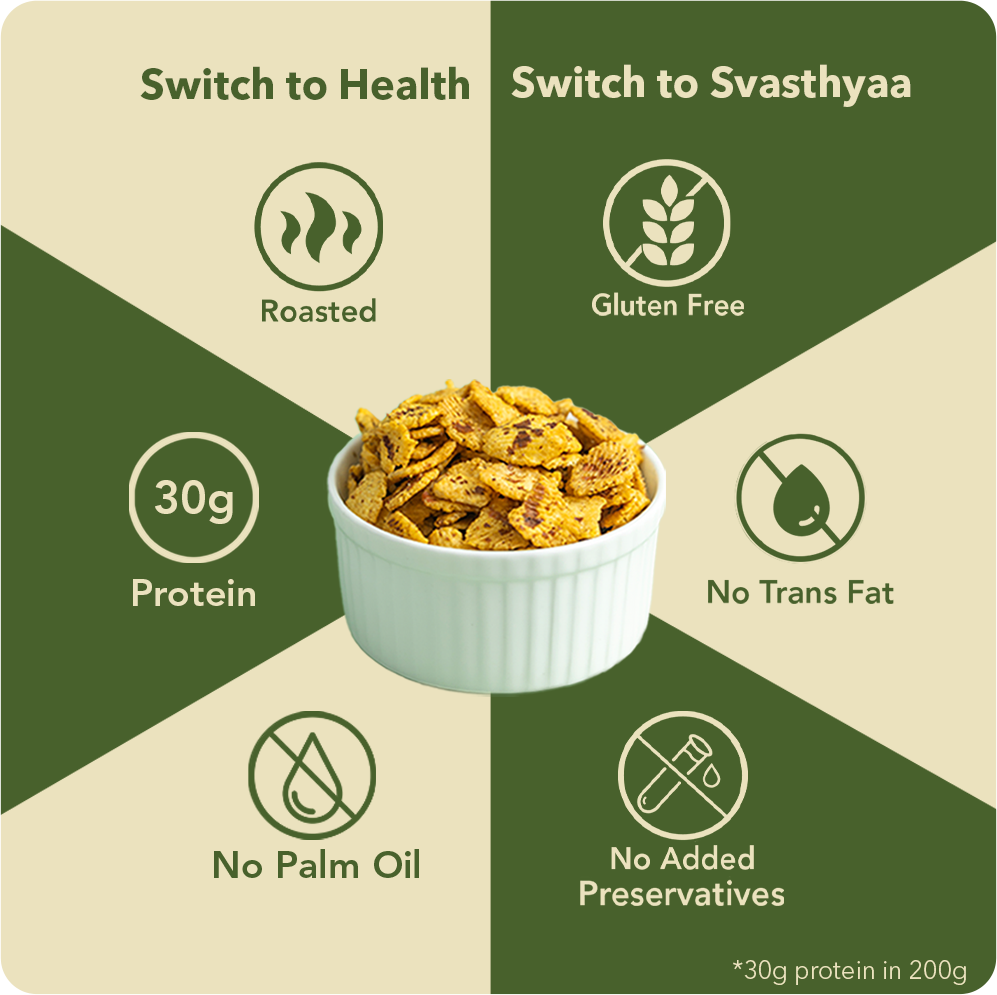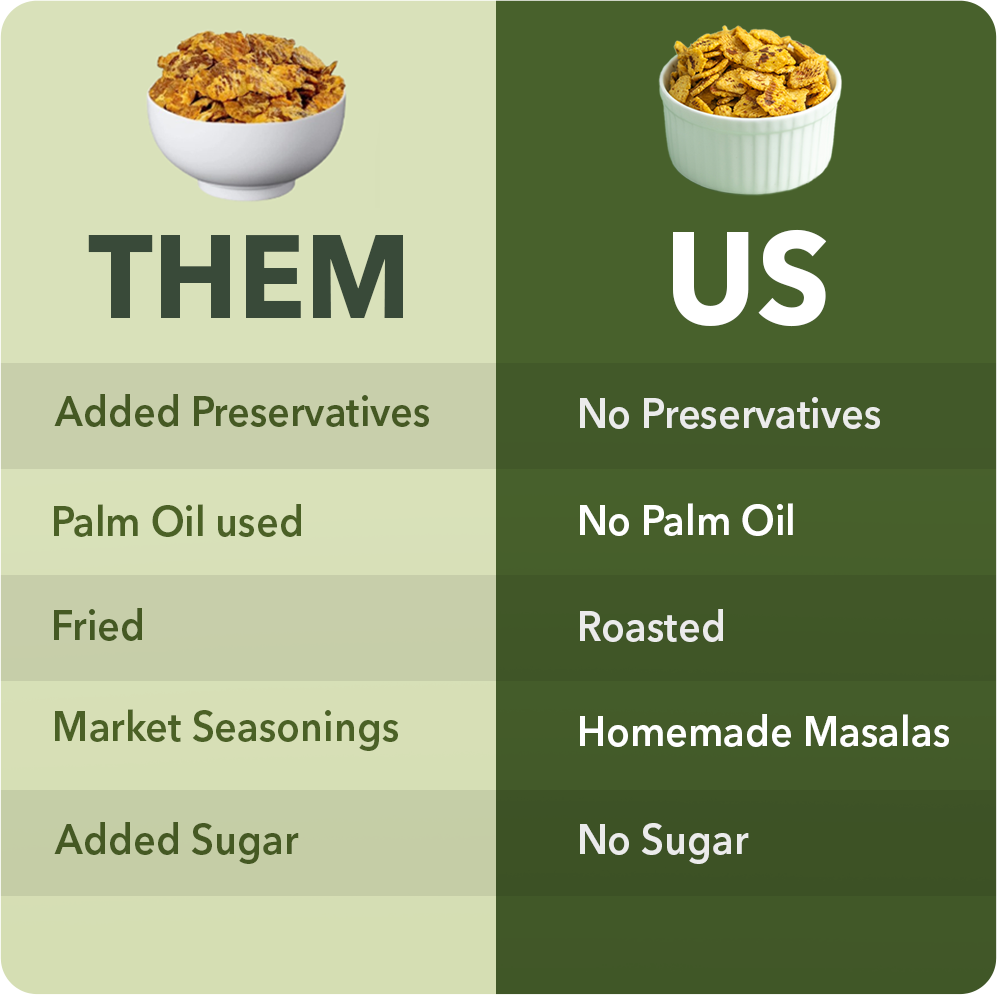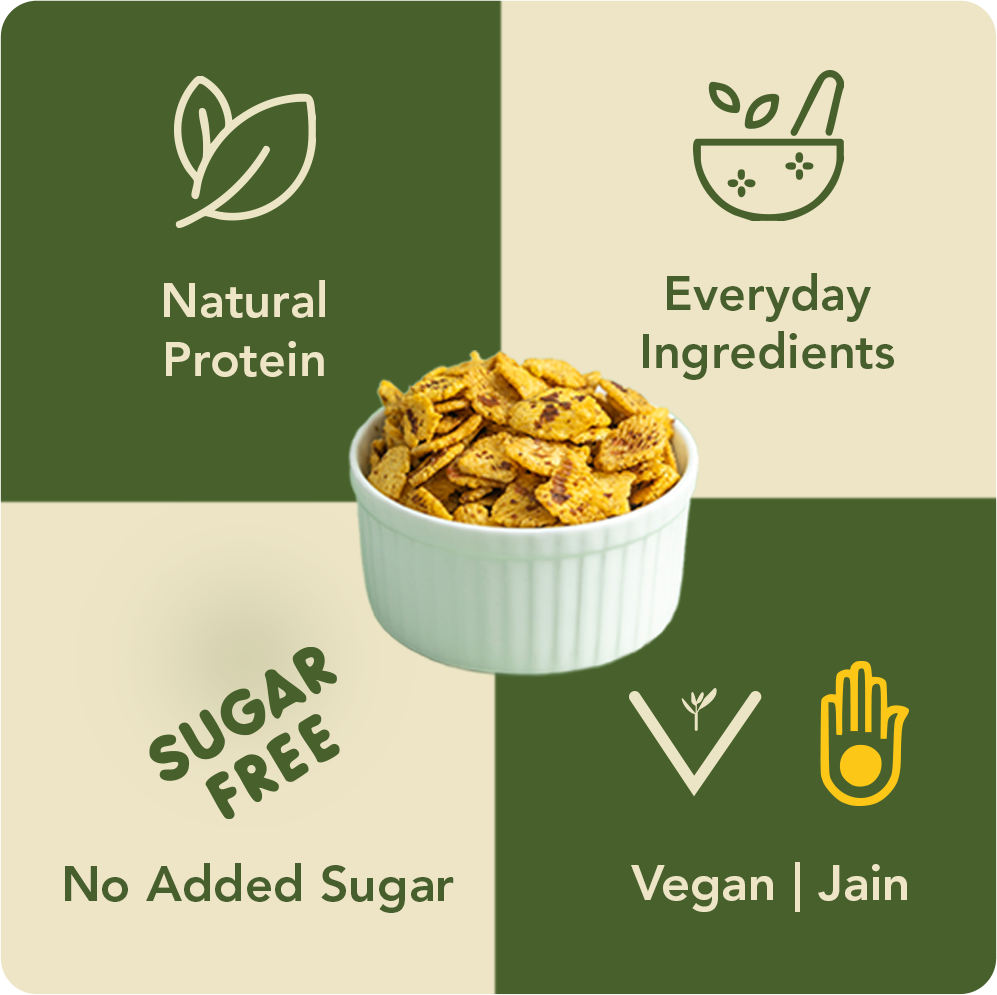(29)
Bajra I Millet Khakhra
Rs. 170.00
Unit price / perOut of stock
Bajra Millet khakhra: Wholesome Tradition, Delightful Taste
Experience the robust flavors of tradition with our Bajra khakhra, a nutritious snack crafted from the rich, rustic grains of bajra (pearl millet) and khapli (Emmer) wheat. Our khakhra is a testament to our dedication to promoting health and wellness through time-honored ingredients and modern culinary practices.
Key Features:-
Rich in Ancient Grains: Our khakhras are made with a hearty blend of bajra and khapli wheat, grains celebrated for their nutritional profiles and sustainable farming attributes.
-
Expertly Roasted: We meticulously roast each khakhra to achieve a perfect, satisfying crunch, providing a healthier alternative to traditional fried snacks.
-
No Palm Oil, No Maida: Committed to your health and the planet, our khakhras are free from palm oil and refined flours, ensuring every bite supports your wellness and environmental sustainability.
-
Deliciously Nutritious: Combining the earthy essence of bajra with the subtle sweetness of khapli wheat, our khakhra is not just a treat for the palate but also a boon for your health.
Health Benefits:
-
Supports Digestive Health: High in fiber, bajra and khapli wheat aid in digestion and promote a feeling of fullness, helping with weight management.
-
Heart-Healthy: Our wholesome ingredients contribute to cardiovascular health by maintaining lower cholesterol levels.
-
Energy Sustaining: Perfect for a nutritious snack, bajra provides lasting energy, making our khakhra an excellent choice for active lifestyles.
Perfect for any time of the day, whether paired with your morning tea, as a midday snack, or as part of a light evening meal, our Bajra khakhra invites you to indulge in the taste of tradition and the benefits of wholesome eating. Embrace a snack that’s as good for the soul as it is for the body.
Nutrition Facts
Protein 2.75g
10.73%
Carbohydrates 13.19g
53%
For more details refer to nutritional information
Share
No Palm Oil
Prioritizing your health with every bite.
No Maida
Wholesome goodness without refined flour.
Roasted
No Trans Fats
Gluten Free
Happy Gut.
Organic
Pure ingredients for a cleaner, healthier you.
Vegan Friendly
Nourish your body. Respect all life
FAQs
Bajra, also known as Pearl Millet, is the primary ingredient in Svasthyaa Millet Khakhra.
No, there's no added sugar in Svasthyaa Millet Khakhra, making it a healthier choice for a snack.
The ingredients for our Millet Khakhra, including Bajra or Pearl Millet and Organic Khapli Wheat, are sourced from the fertile, green farms of Western Maharashtra, ensuring high quality and freshness in each Khakhra
Yes, it is. Our Millet Khakhra is low in carbohydrates and free from added sugars, making it a suitable snack option for people with diabetes.
Reviews
Undoubtedly the BEST healthy snacking brand. Their Chana Jor is to die for and it stands by its claim “World’s best Chana Jor”
Mala Gurbani
Introducing high fiber millets into my meals has been a game-changer; they're not only deliciously versatile but also incredibly nutritious. They've become a key part of maintaining my health-focused lifestyle!
Kailas Bhat
Khakhra of khapli wheat was very nutritious easy to digest. It is better then other wheat khakhra.
Esuf Rangwala
Moong Jor has been a fantastic snack discovery for me – it's light, crunchy, and full of flavor. It's the perfect guilt-free snack that satisfies my cravings while aligning with my health-conscious lifestyle
Arush Gangwani
Svasthyaa's Chola Fadi Khakra is a game-changer! Crunchy, flavorful, and perfectly balancing protein and fiber for my daily nutrition needs. Definitely a healthier, tasty alternative to usual fried snacks!
Monika Tanwar
I was thrilled to discover the Millet Laddoos – a diabetic-friendly, millet-based treat with no added processed sugar, perfectly aligning with my dietary needs. Delicious and gluten-free, they're an ideal choice for anyone seeking a healthier, guilt-free snack.
Shalini Pawar
Delicious and nutritious, these protein-rich laddoos are a perfect treat for diabetics, with no added processed sugar and a gluten-free, dry fruit-packed delight!
Harshal Yadhav
Very healthy and tasty snacks and will recommend everyone. Thanks for the speedy 1 day delivery
Hemant Sharma
Quick Reads

Health Benefits of Roasted Chana
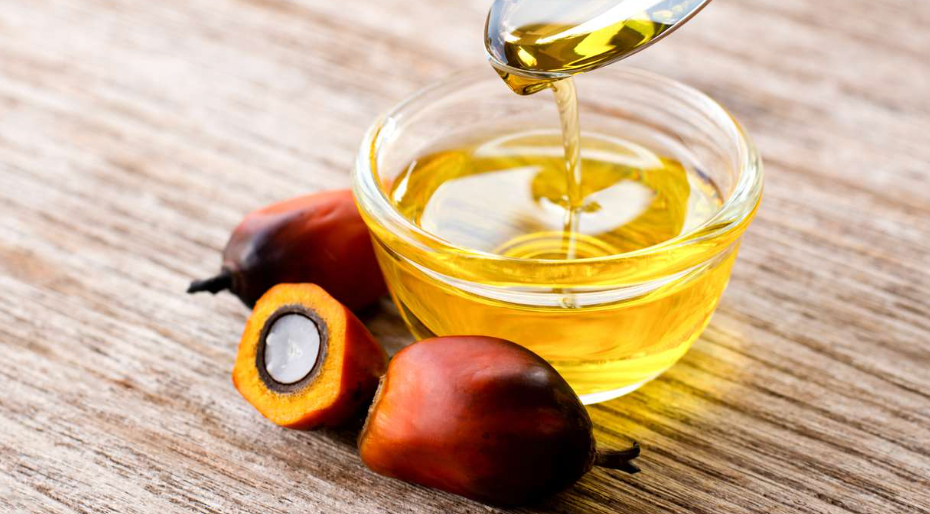
Is Palm Oil Good for Health or Dangerous?

Healthy Evening Snacks For Weight Loss - Recipes and More

How Much Sugar Intake Per Day Is Healthy -Sugar Intake by Age & Limits
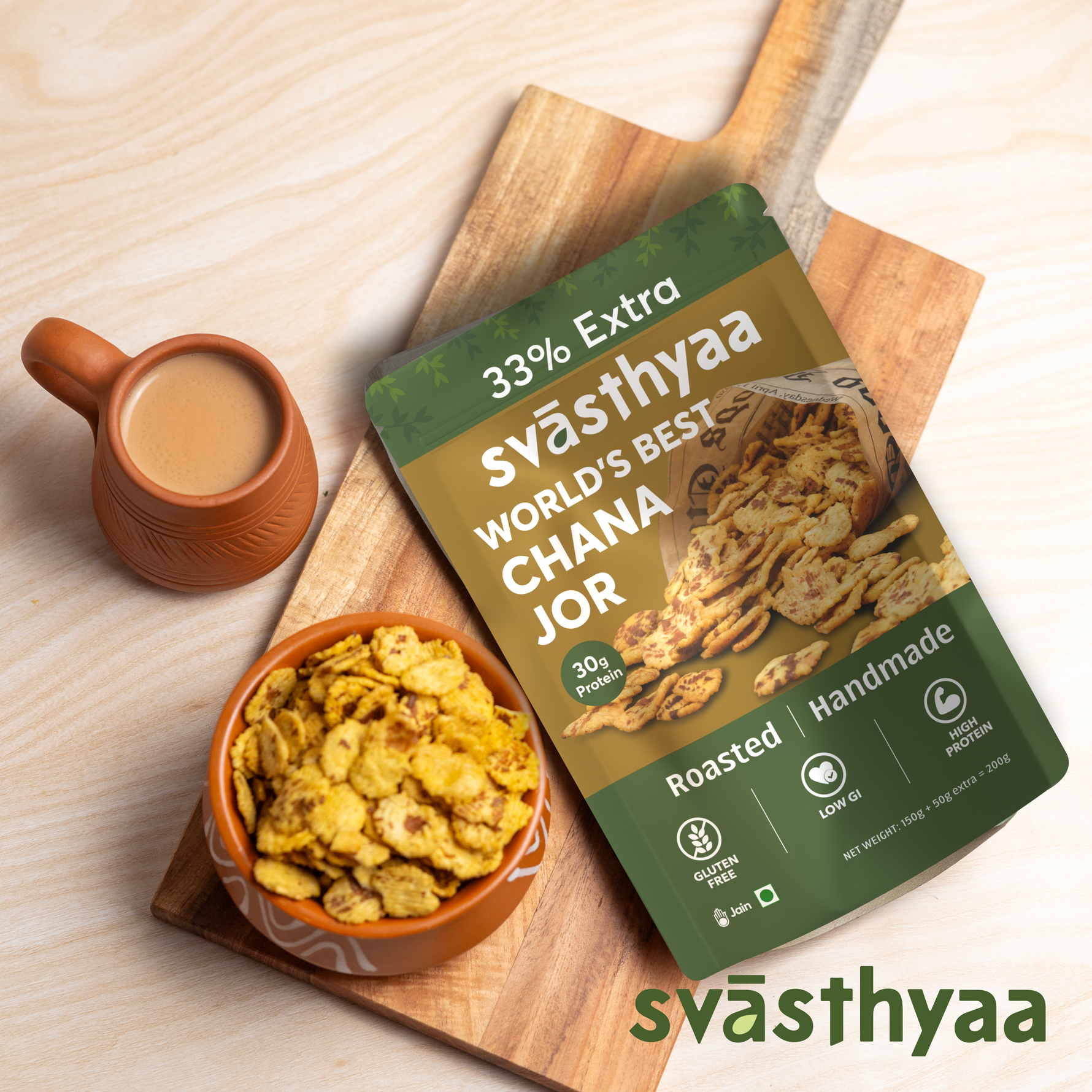
Our very own traditional delight CHANA JOR
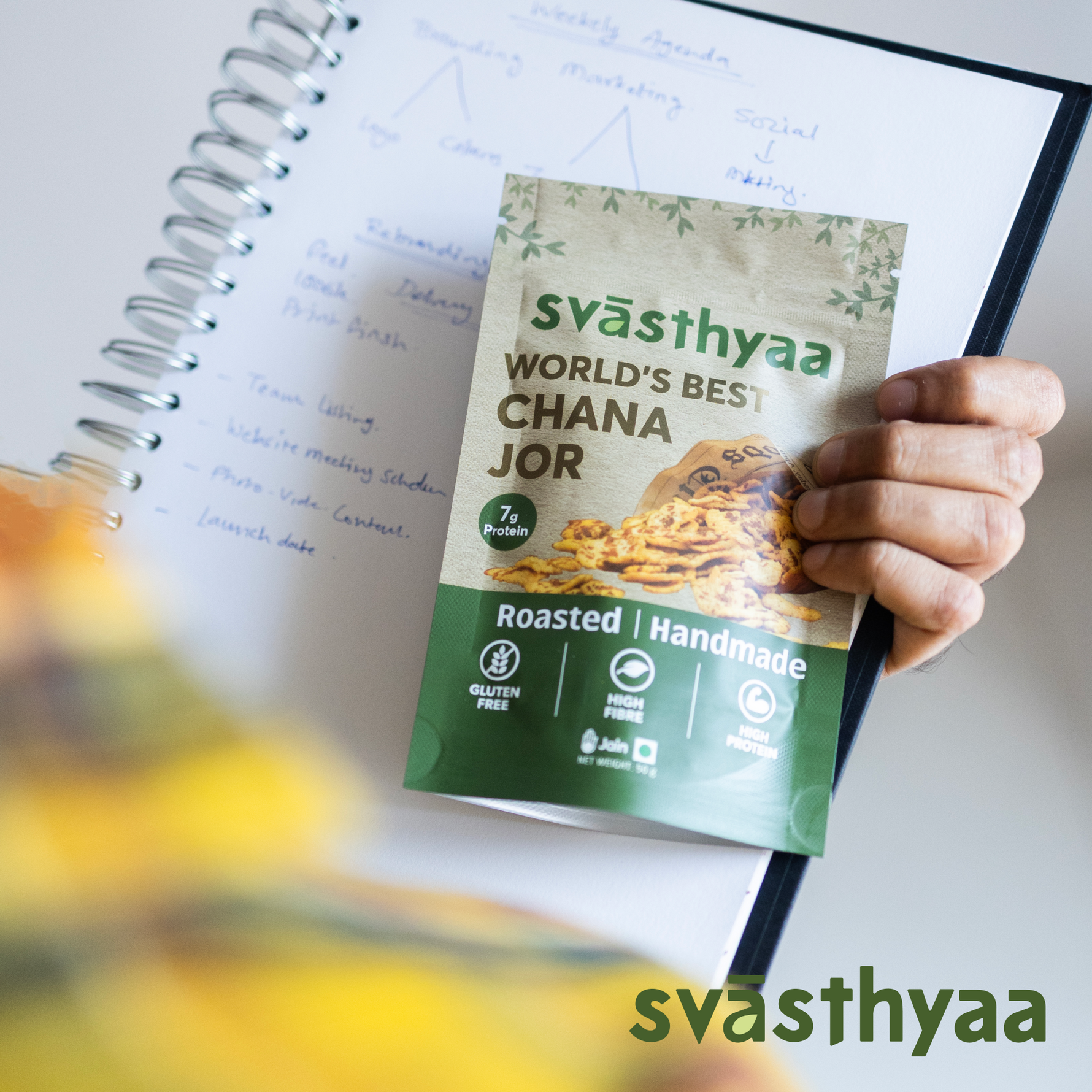
Reviving the Legacy of Chana Jor: A Nutritious Comeback
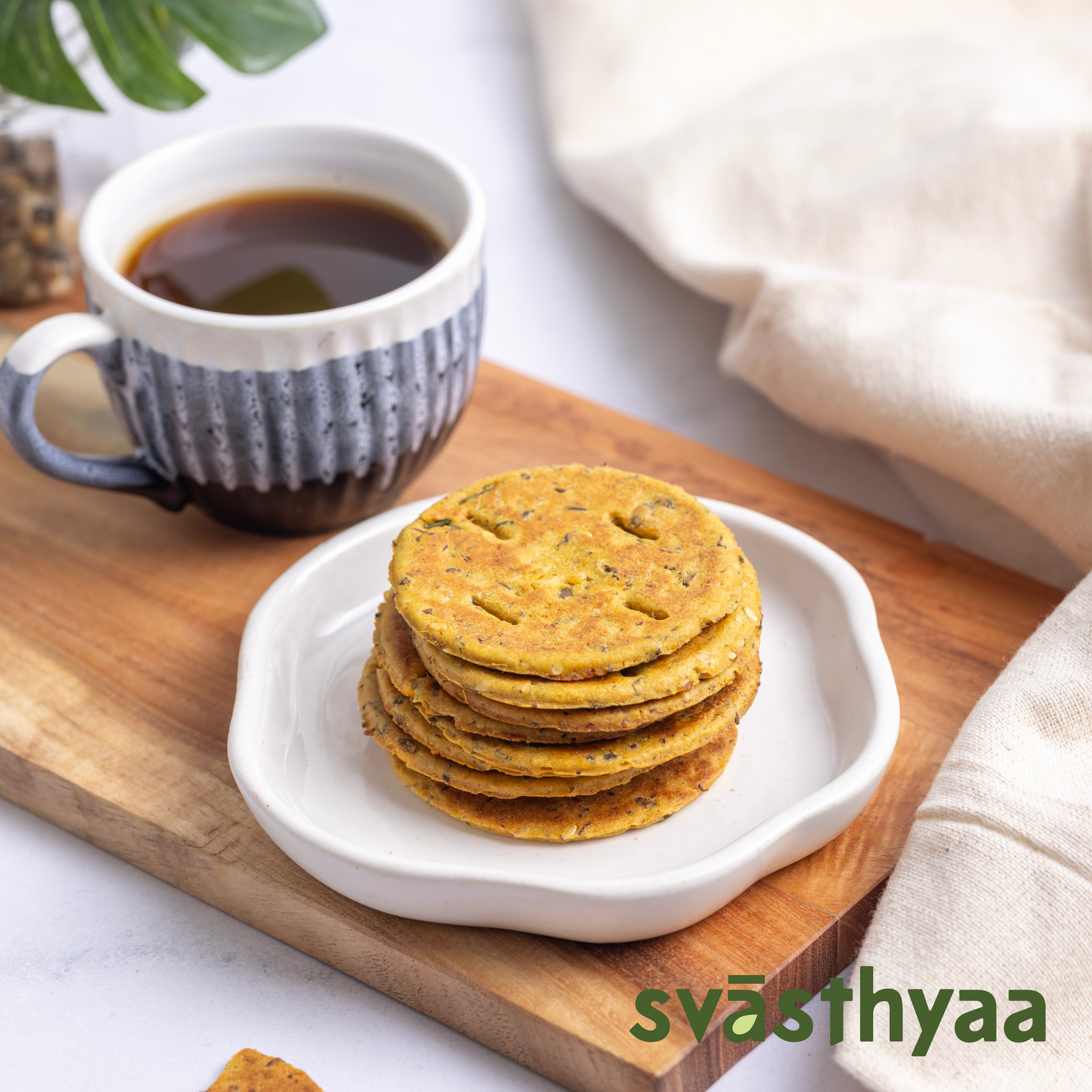
Sprouted Moong Snacks – The Indian Superfood

Sustainable Snacking: Rediscover Traditional Goodness with SVASTHYAA












